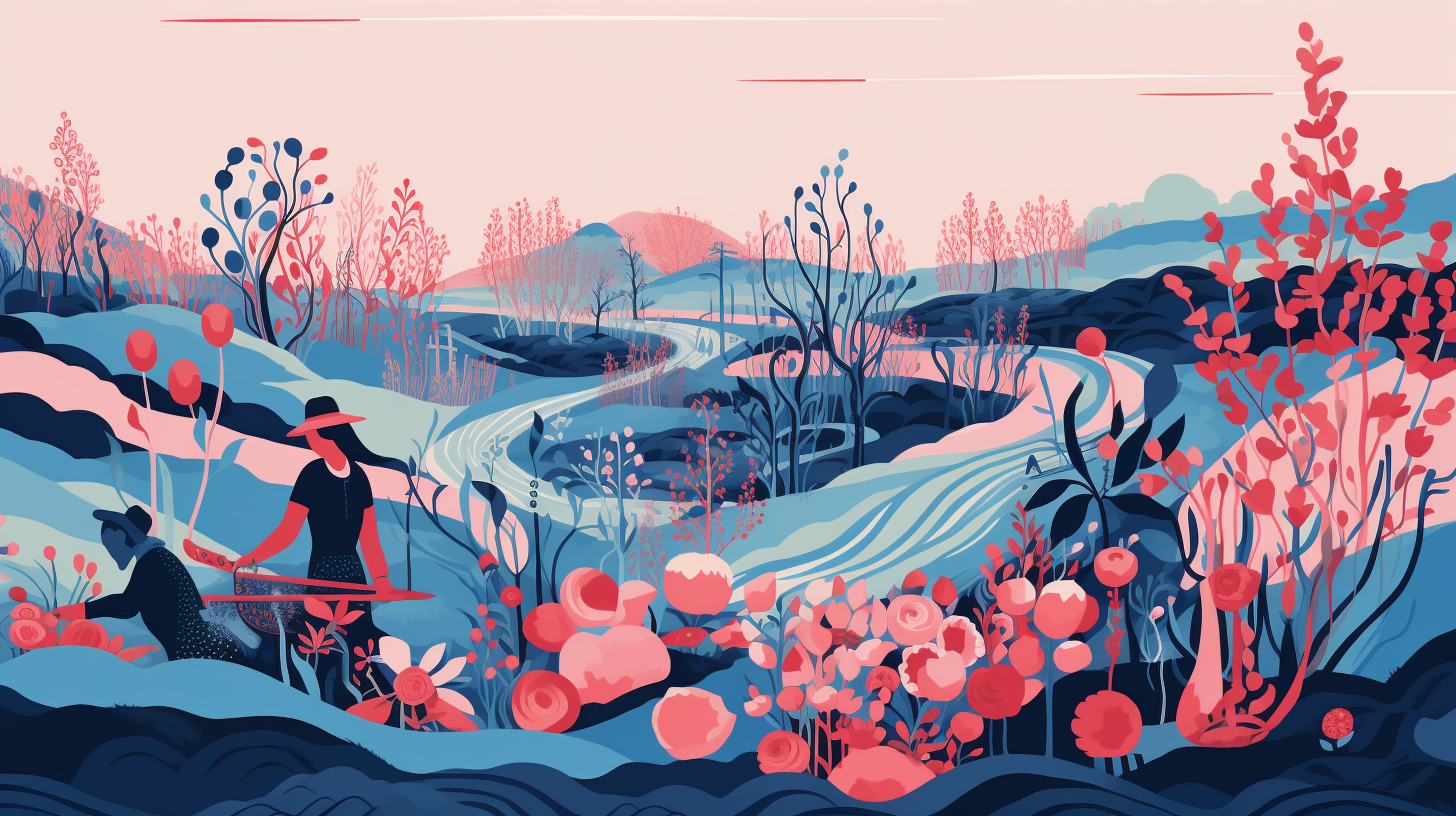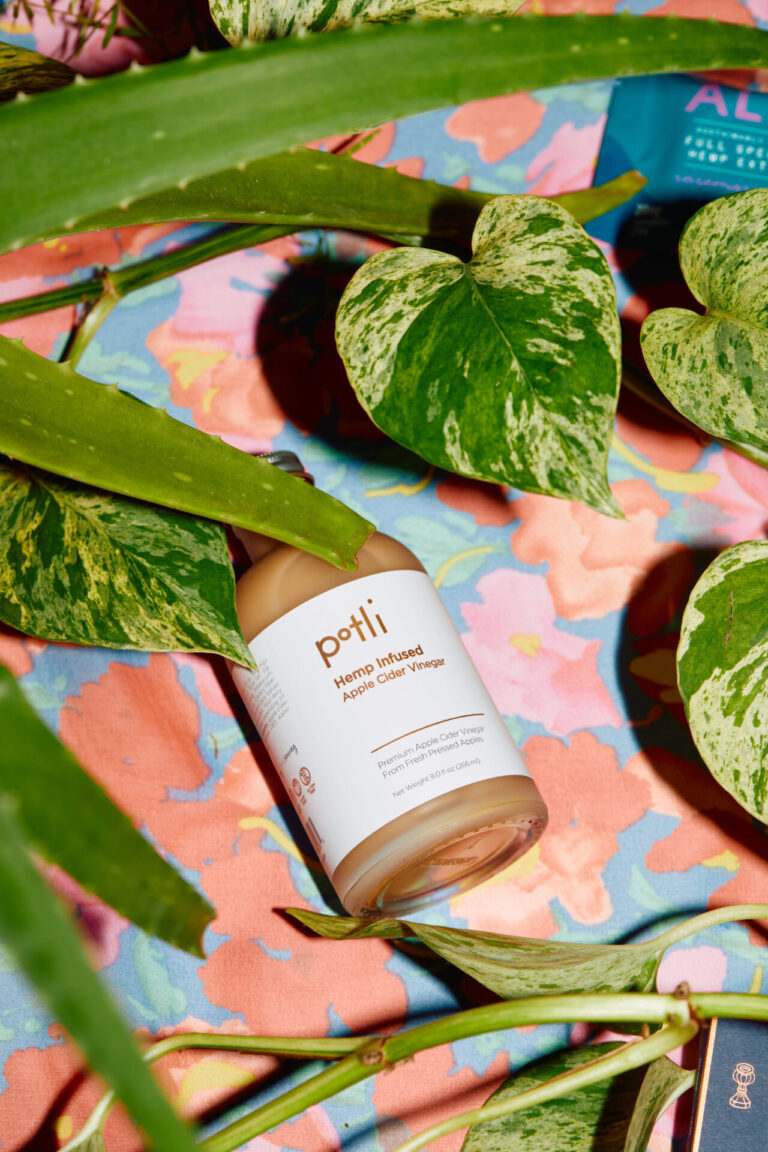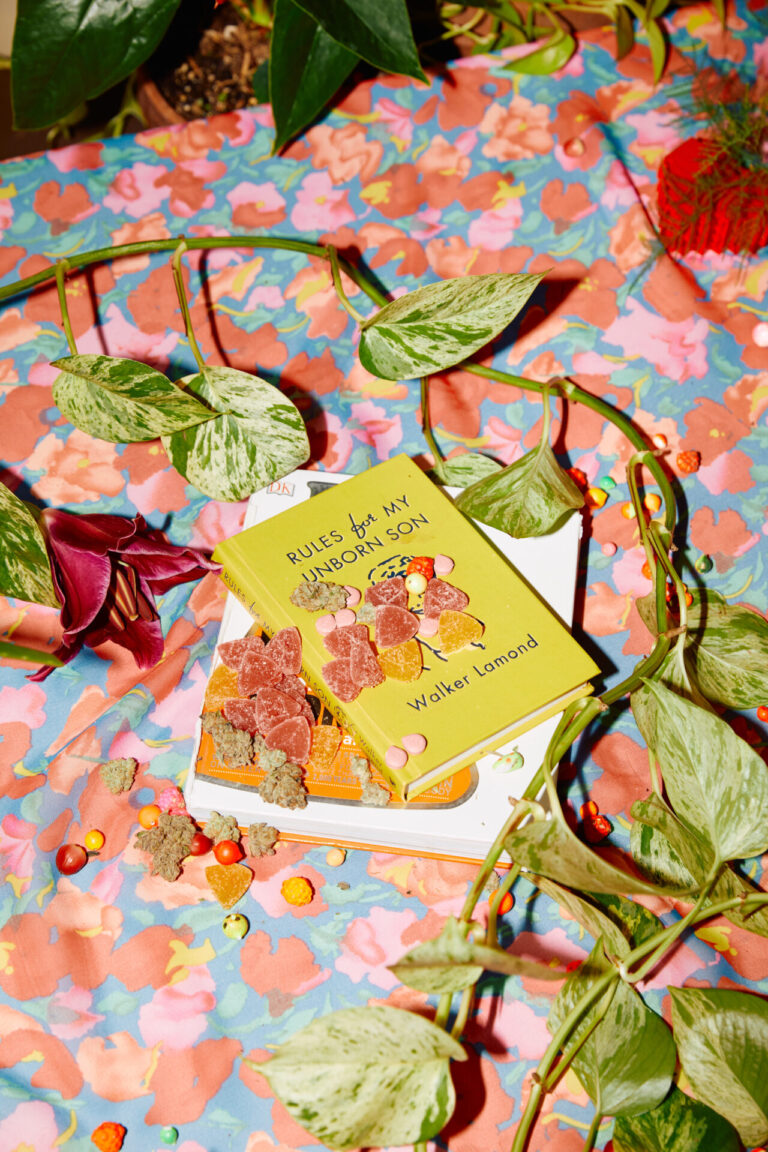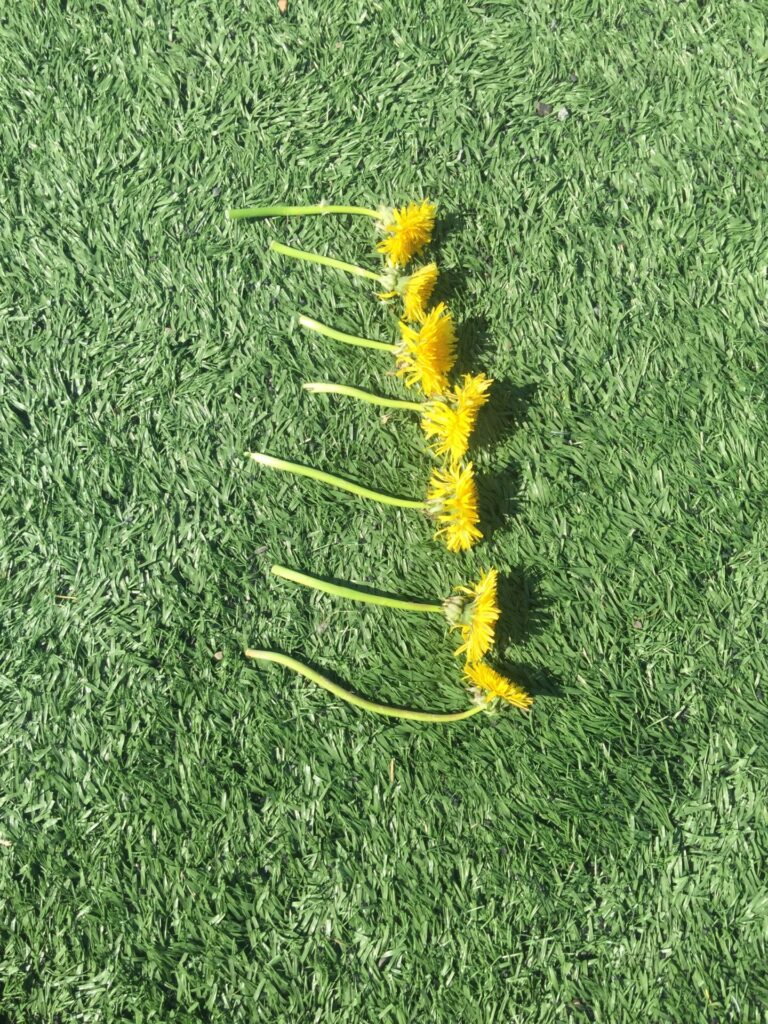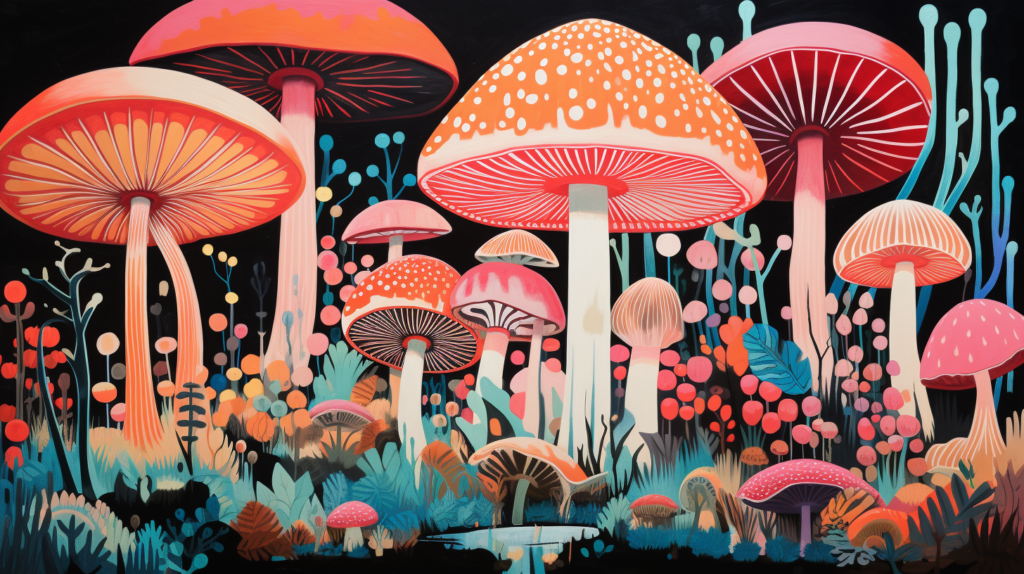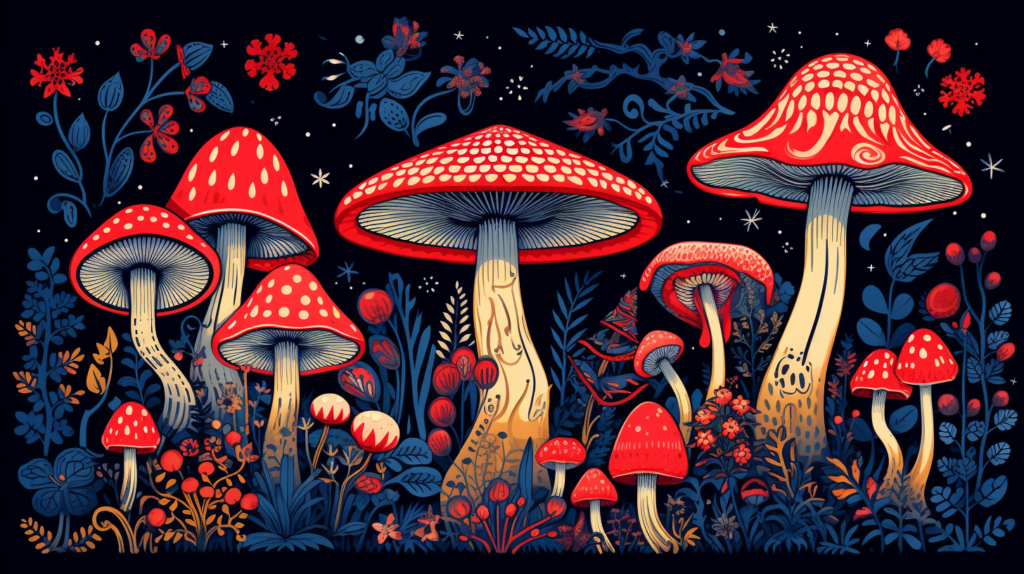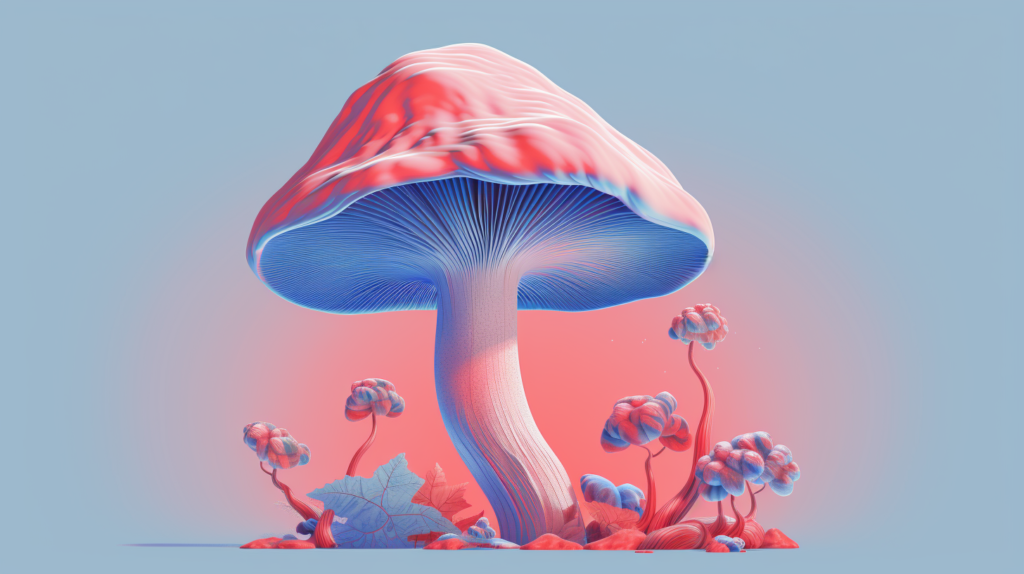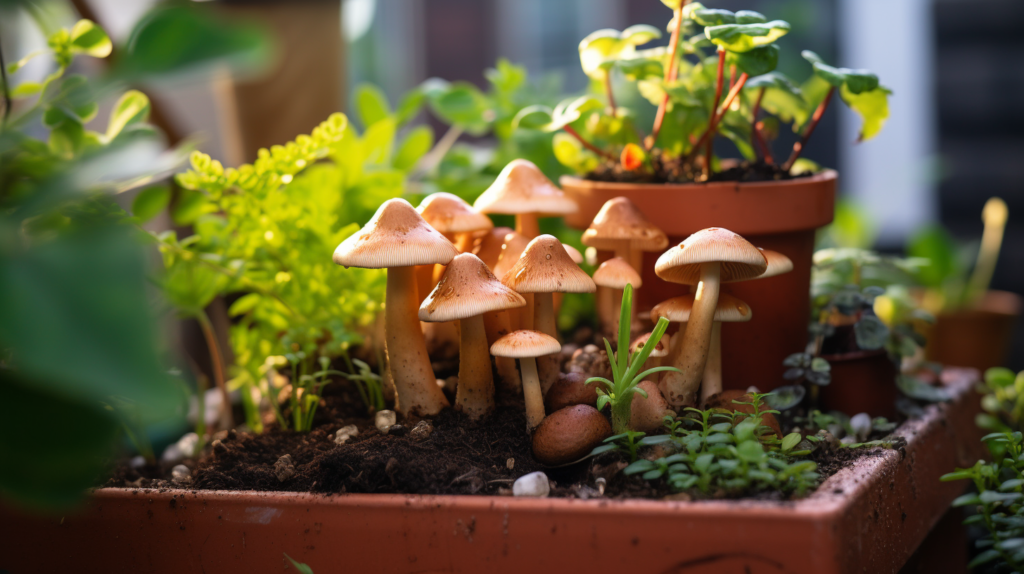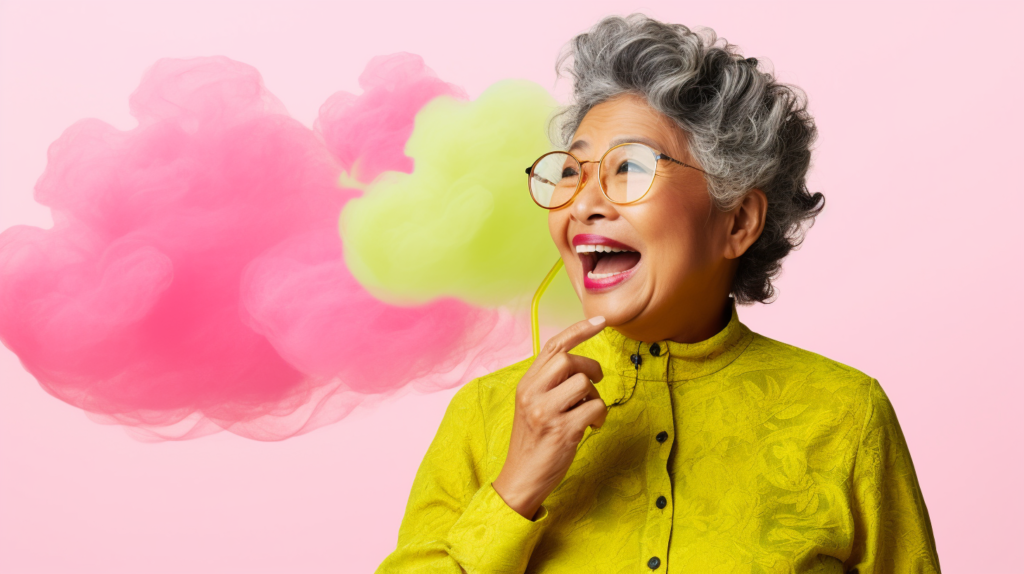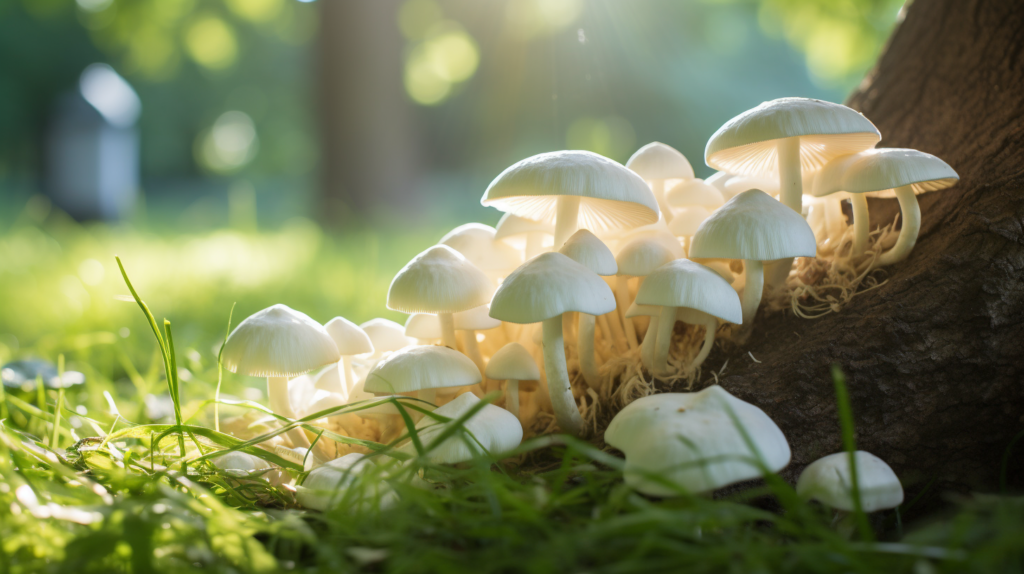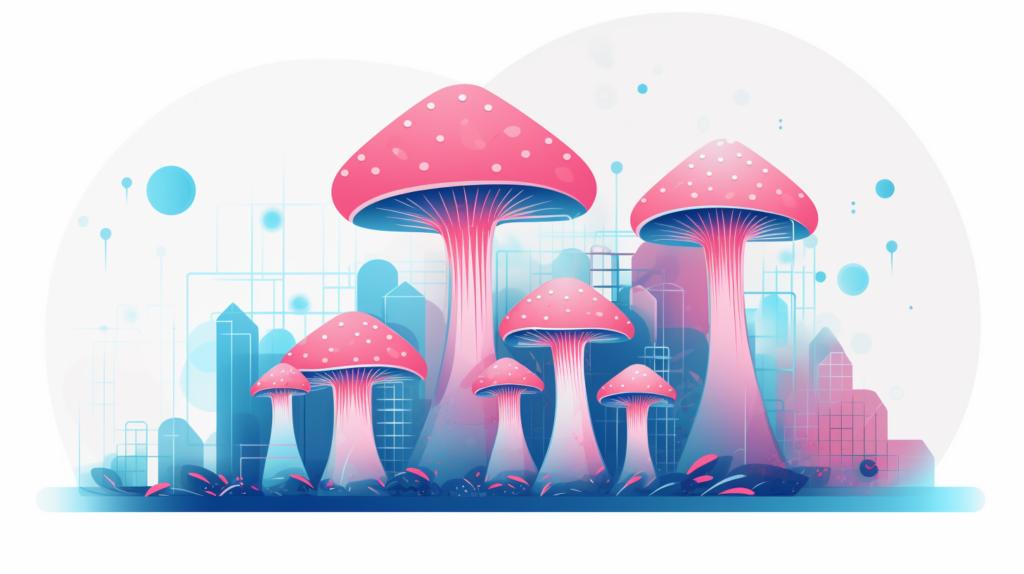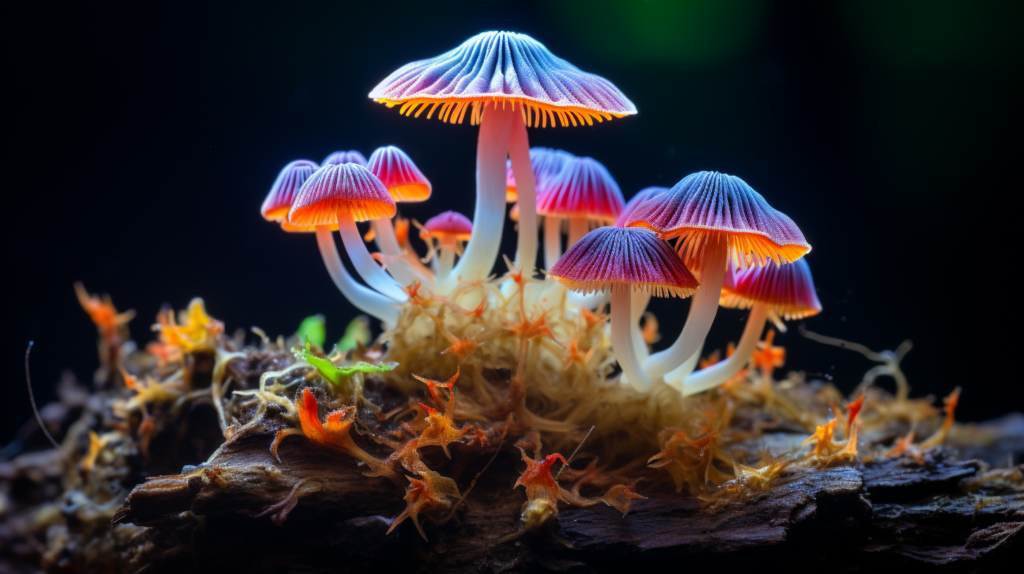0:00:00 April Pride: This podcast discusses cannabis, and is intended for audiences 21 and over.
0:00:09 April Pride: Welcome to The High Guide. I’m your host, April Pride. Today’s episode is a recently recorded event in Clubhouse where you can join me each Friday at 1 PM Pacific time with an assortment of High Guides as we cover all things A to Z related to plant medicine. Today’s episode is kicking off a couple of things, one, this month of June, we’ll dedicate each week’s episode to sharing part of the weekly discussion that plays out in my Friday Clubhouse events. We’ll call them Clubhouse Clippings because the full events are 60 minutes. We narrow them down significantly for podcast episodes, which brings me to the second thing today’s episode is kicking off, and that is we have a new air day each week starting today, and like our weekly Clubhouse events, new episodes air each Friday just in time to get your high straight for the weekend, right? For today’s episode with an air date, just before June 5th’s World Environment Day, a different take on getting your high right, sustainability, and specifically the fact that cannabis packaging is anything but sustainable. But before I lose you because you wanna go get high and forget about our impending planetary doom, it’s important to mention that in this episode, we’re narrowing the broad topic of sustainability to that of packaging and product manufacturing, because I’m a product person, first and foremost, my first company in cannabis, we had stashed goods to store, smoke and share weed.
0:01:38 April Pride: And I struggle so much with the waste that comes with product design and manufacturing that I’ve sworn off designing and manufacturing physical products with a limited life cycle, at least for now. I mean, consider this fact, the legal cannabis industry in the United States produces about 150 million tons of waste each year. That is crazy. So when New York passed adult-use legalization, the state quickly followed up with legislation mandating that marijuana sold in New York must be packaged in materials that are at least 50% recycled. And I just wonder, what does that mean for small businesses? It’s what’s best for the earth, for the environment, but is it sustainable for small businesses? So on our recent Clubhouse, I gathered women who are founders of cannabis brands with products that includes CBD beauty, cannabis, and hemp flower pre-rolls as well as glass goods, each with businesses accurately described as small. And as I mentioned, I too have founded several product-focused brands in and out of cannabis, each of us as product designers and brands struggle because our work doesn’t reflect our personal values as it relates to sustainability. So join me as we get into it with Valerie Sakota of Barbari, Blair Brown of Poplar, and Esther Ramirez of Session Goods. And Valerie starts the conversation with, of course, the challenge of packaging.
0:03:10 Valerie Sakota: I think the biggest factor here is packaging, and as a small business, that can be one place where it’s really easy to cut corners because sustainable packaging can be really expensive with high minimums, and it’s really easy to source from China, it’s easy to get out the door, and there you go, but the impact of sourcing single-use plastics coming all the way from China, and what is the kind of cost-benefit analysis of that, both in terms of what our consumers want to see, but also the precedent that we’re kind of setting for how our products are kind of moving throughout the world and the impact that they’re going to leave behind. Yeah, I mean, we’re doing our best to kind of continuously audit what we are doing and our environmental impact, and initially, we produced products that were all packaged in foam, and it was because that was the Gilbreth producing 200 units, maybe 1000 at a time, and it’s taken us three or four years to now the bong comes in fully recyclable packaging, but we had to hit significantly higher growth before that was even a sustainable option for us, and it’s still more expensive, but it’s just counter-intuitive ’cause it’s like it’s recycled, it should technically be cheaper.
0:04:43 April Pride: A quick background on units. A unit is of course a box, the plastic pre-roll tube, a bong, a pre-roll, etcetera. It’s the widget. For all manufactured goods, the number of units you order at one time determines the cost per unit. The more you buy, the cheaper the units cost. If a brand places an order to manufacture 200 widgets, it is unlikely this number meets the manufacturer’s MOQ requirement. MOQ is minimum order quantity and MOQs of 10,000 units, that’s where the unit cost becomes low enough that brands that need, say, 500 units, they’ll consider buying 10,000 units to get better margins on their product overall.
0:05:29 Valerie Sakota: One way we’ve gotten around it as a pre-roll company is by partnering with other small brands, and so there can be some cooperation between, for example, the partner that we have in Oregon that’s producing our THC product, we’re able to say, “Okay, you have a source for,” let’s say, for custom cones, for example, “And we want to add our order into your established order flow,” then they’re already hitting those minimums or between the two of us, we might actually be able to get to those minimums and only have to pay a small extra change fee, which is way more economical. So that’s one thing that we’ve started to encourage friends in the industry to consider is like, “Do you have an established sustainable supply partner? Can we work together to potentially lump our orders?” Or cooperate in some capacity so that both businesses are getting smaller quantities, but we’re hitting those minimum orders that allow it to be more economical.
0:06:39 April Pride: The four of us that are up here talking are all really product people. And I have this question. I know that with 10,000 units as an MOQ, Esther has been able to… And Session Goods have been able to produce, and I’ve seen them myself, amazing packaging. Beautifully customized package packaging. So if you are a smaller brand and you want to offer sustainable packaging, how do you think consumers really feel about the cardboard look? Let’s just break it down like, does it really, at this point, if you just put it out there and say, “This is the most sustainable way for us to bring you this product,” and it’s an industry where we have to start really thinking about this, do you think that the consumer cares? Do you think they’ll be like, “Okay, I get it.”
0:07:31 Valerie Sakota: I can very much tell you the consumer still, regardless of the information that you give them and the transparency that is afforded to them, they still very much buy with 80% of their decision being based on the brand and the packaging. So your brand’s first presentation, it’s for step forward…
0:07:46 April Pride: How it looks. The packaging and how it looks. Yeah.
0:07:48 Valerie Sakota: Yes, how it looks. Yeah, so there’s definitely people that buy specifically because it looks more natural, and there’s companies that market unnatural products in very sustainable-looking packaging specifically because they wanna corner that market. But let’s be honest, that’s a very small segment of the market. It’s still a very niche market. As much as we think it’s important, it is really only controlling 10% of the marketplace right now.
0:08:09 April Pride: Like I said, most of the women that are up here we’re product people. We don’t grow, but Valerie does source hemp flower for Barbari smokable herbs, and you don’t just source hemp, you source other flower products, smokable herbs to make these spliffs. Your packaging, if you wanna… Esther explained how their packaging changed as their ability to meet higher and higher MOQs changed and it gave them more freedom and flexibility to choose the type of packaging that they feel good about putting out. How has Barbari’s packaging changed?
0:08:46 Blair Brown: Yeah, so when we talk about packaging, we’re not just talking about what we’re putting our product in for the shelf, but we’re talking about our shipping materials. When we started a few years ago, we had jars with stickers on them, and that was just run-of-the-mill jars that we could get. Stickers, of course, are mostly plastic, and that was just easy ’cause small volumes. In the last year, we’ve actually… Well, prior to that, we started to screen print our jars. We weren’t paying a whole lot of attention about the source of the glass or anything like that, but we moved away from plastic lids, that was one of the first things we were able to do, to a tin lid. And in the last year, we were able to source more sustainable glass jars, so it’s something like 50% of the glass is post-consumer recycled, and there was another metric in there of another portion of the glass material and where it was coming from, but basically, almost entirely a recycled jar that we’re now able to kind of keep in the consumer flow rather than starting with virgin materials. So that’s for our glass jars.
0:10:03 Blair Brown: With our pre-roll packaging, we learned kind of halfway through the first year of selling our pre-rolls that not all cardboard is recyclable, and one of the main factors is that cardboard, the cardboard packaging is often laminated for the shelf because it helps it be water-resistant. It’s also how brands achieve those more premium box looks, and that lamination is plastic. So it could look like a matte cardboard box, but it’s still laminated with plastic to give it that finish. And so we’ve since moved away from laminated cardboard packaging. We had both a paper tube as well as just like a top fold box and we moved away from lamination for both of those. The challenge is when you get into the child-resistant packaging. There’s only a few companies that have managed to do that well without incorporating some level of plastic or hard material in there to help it lock and kind of help the functionality, or if they have, they’re really high minimum orders. So we haven’t yet been able to move away entirely from plastic materials within our packaging solutions. In Massachusetts, as we grow, as we scale, we’ll be able to implement new solutions.
0:11:38 Blair Brown: Another challenge is that we have found almost every year, we’re going through a new packaging exploration because there’s more options available to us as we scale or more elegant solutions that we would prefer to use rather than some of the conky options that are on the market right now, where they have historically been on the market. So it becomes kind of a nightmare in a way to keep up with the evolving technology of child-resistant packaging.
0:12:15 April Pride: Yeah, that makes sense, that you have to revisit it every year, whether it’s because you’re adding a new state to where you’re distributing or everything is just getting a little bit better, right? So every year, more people choose to get into cannabis packaging. They realize, “Oh, there’s an opportunity here.” So more clever people are creating more clever things. The most sustainable thing to do is to buy sun-grown flower and to roll your own cannabis, that is the most sustainable, that and using a glass vessel to smoke ground flower. As far as I’ve heard in the research, that the closer you are to the flower, the more sustainable it is.
0:13:04 Blair Brown: The blown glass, the pipes and the bongs and all that stuff, it’s actually super toxic to make those glass pipes and bongs. So not only is it compromising the health and well-being of the person that’s making it, there’s also an incredible amount of emissions because of the heat and the fire and all the stuff that goes into glass blowing. So that whole life cycle consideration is pretty… Is a pretty important conversation. And I don’t think ultimately we haven’t had it in conversation around cannabis yet, but there’s a book that was written a couple years ago that talks about product life cycles in general across the board, and the book is called Cradle to Cradle. So if anyone’s interested, it’s an awesome book to pick up that talks about all of these pieces of consideration that might not be top-of-mind otherwise.
0:13:49 April Pride: Cool. Thanks Blair. I of course wanna ask Esther what she thinks of that as a designer and producer of glassware, including the most incredible bong. Because I know you explained why you chose the type of glass that you chose. But yeah, what are you looking at with a manufacturing partner?
0:14:06 Esther Ramirez: So we… I’m definitely gonna add that book to my reading list because that sounds super interesting. I… Before I was in cannabis, I was a production manager and designer at Oberly, so there was a lot of work on the supply chain side, making sure that you’re vetting factories, people are paid properly. I know one of the big programs that we’re actually initiating this month is working with a company to offset our carbon emissions. For everything that we ship, we will be ship… Planting trees in the rainforests in order to kind of help offset. We know that planting and investing in forestry is the fastest way to offset and naturally create more environmental benefit, so I’m excited to kinda kick that off and see where that goes for our business. But I’m definitely interested in exploring more, ’cause in my experience, I’ve always felt that glass was one of the more sustainable products, because it can be consistently remelted and produced into something else. But I’m definitely wanting to look more into the science of the way that it’s produced and how it’s… Its impact, ’cause I believe at… Any business at this stage, we all have an obligation to make sure that what we’re doing is not harmful as we continue to grow.
0:15:26 Valerie Sakota: Yeah, I wanna actually add an anecdote to the conversation about life cycle of material. What I learned is that the life cycle and re-usability of plastic and paper is somewhere around five times can they be recycled and then they’re no longer usable, whereas some of the materials like glass and certain metals have almost an infinite re-usability factor, really evaluating, “Okay, the potential of this material that I’m incorporating, how long is it intended to be used within my product and my offering?” and then, “What is its potential after that? Is it more likely to end up in a landfill? Can it be recycled and reused? How accessible are recycling programs within every region? Are they… Is that something that you have to go out of your way to do? Is it ultimately actually just gonna end up in a dumpster with the rest of the trash or is it easy to recycle certain types of glass or certain types of plastics?” And so it becomes… It does become a really, really complicated equation when you’re trying to be thoughtful and mindful as a brand about how you’re packaging your product. So ultimately I think education will be really helpful here, and that can be a burden that the brands take on too as they’re telling their consumers why they’ve made certain decisions about certain materials, incorporating more detail about those materials into their marketing could certainly be a benefit.
0:17:04 April Pride: That’s a brilliant idea. We all run businesses, and so we think a certain way. And when we buy any product, we now are like, “Okay, I understand probably why they made this decision, it’s a handful of factors around something.” But if you really broke it down and explained like, “We have to use these plastic doob tubes because we are female founders.” Female founders raise 2% of what male founders do, right? And so we have to make decisions like this because we’re working with partners that will work with us on low MOQs because we can’t meet minimums. That to us is just, “We know these things,” but I don’t think the consumer understands that 360 of how we actually, what’s really impacting our decisions, and that has everything to do with our resource… Our access to capital. Look at the companies that do care about sustainability, they don’t just use it in their marketing, but you watch them actively using the best practices they can. They’re founded by women for the most part. And unfortunately, these are the brands that don’t have the money to put what they would really like into practice. So I think they’re… Yeah, it breaks down when the people that are… That need more so that they can do more are not the ones getting more. So yeah.
0:18:28 April Pride: I’m April Pride, and I have a podcast called The High Guide. You can download it, subscribe, follow, whatever word you wanna use, ’cause they’ve used all of them now with podcasting, wherever you listen to podcasts. And Valerie is a co-founder at Barbari out of Portland, they have smokable herbs and smokable herb spliffs and THC spliffs available in Oregon, in Massachusetts. Esther, Session Goods and its glassware. This is April coming in as a narrator to my own Clubhouse. So just then I call the products from Session Goods glassware. It’s just glass, glasswares in the kitchen and glasses in Session. Okay, so it’s glass, not glassware. Going back to me loving Session Goods glass, the most beautiful pipes and bongs that you’ve tried. Blair is a co-founder at Poplar, which is an online ecosystem selling cannabis-plus products, so nootropics, nervines, adaptogens. Thanks for listening to this recently recorded event in Clubhouse. And join me, April Pride, each Friday at 1:00 PM Pacific with an assortment of High Guides as we cover all things A to Z related to plant medicine. Of course you can listen to a new episode of The High Guide now every Friday.
0:19:52 April Pride: Please subscribe and follow wherever you listen to podcasts. For the month of June we’ll air more Clubhouse sessions, and in July we’ll kick off our monthly themes and A to Z lists from expert High Guides. Thanks to our High Guides in this and every episode, a special thanks to The High Guide’s writer and content editor, Megan Ridley, our marketing coordinator Bianca Kratsky and brand manager Molly Longest and our producers, Nick Patri and Josh Brown. I’m April Pride and join me back here each Friday for The High Guide.

